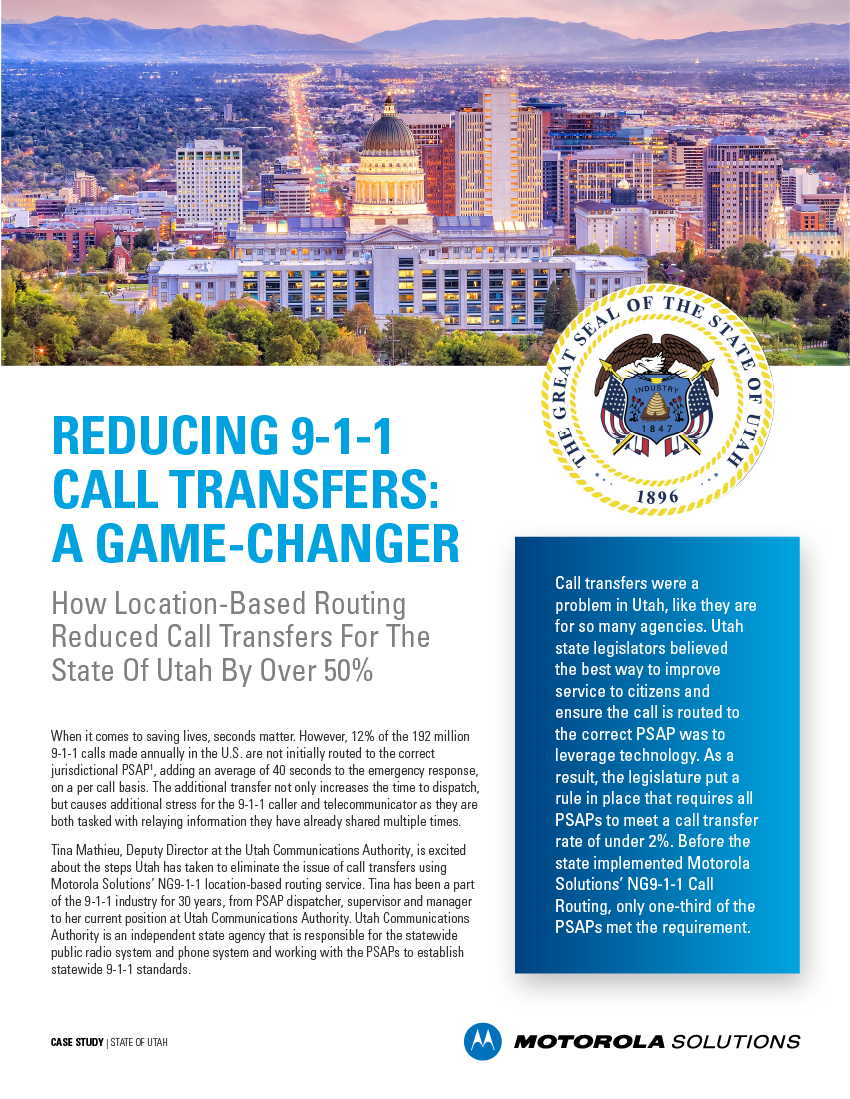Take the first step in
less than 40 seconds


What if {{company}} could reduce 911 call times by 40 seconds?
Each time a call is misrouted, PSAPs lose valuable seconds when working to respond to emergencies. These delays not only lead to increased time to dispatch, but additional stress is added on the 9-1-1 caller and telecommunicator when vital information is having to be repeated multiple times.

Calls
 Expected number of 9-1-1 calls
Expected number of 9-1-1 calls
Estimated hours lost*
{{calculation}}
Book your demo now 
*Calculation based on APCO study from here



I don’t think in my 30 years in the 9-1-1 industry, I can think of a time where technology was this impactful without having to make any adjustments in policy.
Tina Mathieu, Deputy Director, Utah Communications Authority

See how location-based routing reduced call transfers for the State of Utah by over 50%.
 Download case study
Download case study
Take the first step in
less than 40 seconds








 Autofill with LinkedIn
Autofill with LinkedIn
